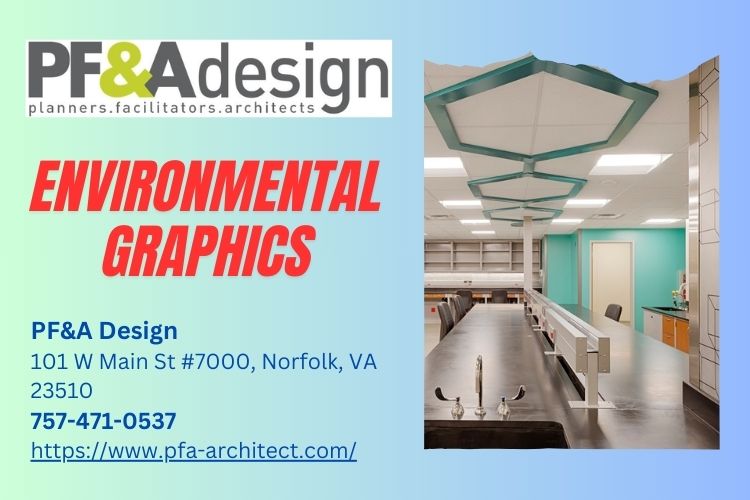Introduction
Creating healing environments is not just a trendy phrase; it’s a vital component of healthcare architecture that can significantly impact patient outcomes. In Norfolk, VA, where the blend of tradition and modernity creates unique opportunities for innovative design, healthcare architects are tasked with crafting spaces that promote wellness, facilitate healing, and foster community connections. This article delves into the intricate relationship between architecture and healthcare, focusing on how thoughtful design can enhance the patient experience.
Creating Healing Environments: The Art and Science of Healthcare Architecture in Norfolk, VA
Understanding Healing Environments
Healing environments encompass various elements that contribute to a patient's emotional and physical well-being. These spaces are carefully designed to reduce stress, enhance comfort, and promote recovery. Key features often include natural light, green spaces, calming color palettes, and intuitive navigation pathways. But what specific aspects of design make an environment truly healing?
The Role of Nature in Healing Spaces
Research consistently shows that exposure to nature can have profound psychological benefits. Incorporating elements like gardens or views of natural landscapes in healthcare facilities can lower blood pressure, reduce anxiety levels, and improve overall satisfaction with care.
Color Psychology in Healthcare Design
Colors influence mood and perception. Warm tones can create a sense of comfort while cooler hues may promote calmness. Understanding the psychology behind color choices allows architects to design spaces that positively affect patients’ emotions.
Healthcare Architects: Pioneers of Healing Design
Who Are Healthcare Architects?
Healthcare architects specialize in designing buildings specifically for health services. They understand the complex requirements of medical facilities—from ensuring compliance with health regulations to creating functional layouts that enhance patient care.
The Importance of Collaboration
Healthcare architects work closely with medical professionals to garner insights into operational needs. This collaboration ensures that designs accommodate both staff workflows and patient experiences effectively.
Dental Architects: A Specialized Approach to Oral Health Facilities
What Do Dental Architects Do?
Dental architects focus on creating spaces tailored specifically for dental practices. They consider unique factors such as equipment placement, patient flow during appointments, and even sound control within treatment rooms.
Designing a Welcoming Atmosphere for Patients
An inviting environment can alleviate anxiety among dental patients. Features such as comfortable waiting areas, calming colors, and even artwork can help create a more pleasant experience.
Hospital Architects: Crafting Comprehensive Care Spaces
The Unique Challenges Hospital Architects Face
Designing hospitals involves addressing numerous challenges including high traffic volumes, diverse patient needs, and strict regulatory compliance. Each decision must balance aesthetics with functionality.
Innovative Solutions for Patient-Centric Care
Modern hospital designs increasingly focus on patient-centered care models. Features like single-patient rooms enhance privacy while also reducing infection risks—key considerations during architectural planning.
Integrating Technology into Healthcare Design
Smart Building Technologies in Healthcare Facilities
Technology plays an essential role in contemporary healthcare architecture. Smart building solutions—including automated lighting systems and advanced HVAC systems—can significantly enhance energy efficiency while improving patient comfort.
Telehealth Considerations in Design
As telehealth continues to grow in popularity, architects must consider incorporating dedicated spaces for virtual consultations within their designs—ensuring accessibility without compromising privacy.
Sustainable Design Practices in Healthcare Architecture
Why Sustainability Matters in Healthcare Facilities?
Sustainability isn’t just an environmental concern; it also influences public health outcomes. Eco-friendly designs reduce waste and energy consumption while fostering healthier indoor environments through better air quality.
LEED Certification for Healthcare Buildings
Many hospitals strive for LEED (Leadership in Energy and Environmental Design) certification as it signifies commitment to sustainable practices—an essential factor influencing modern healthcare architecture decisions.
Case Studies: Successful Healing Environment Designs in Norfolk VA
Notable Projects by PF&A Design
PF&A Design has been at the forefront of integrating healing environments within its projects across Norfolk VA., employing innovative strategies to enhance patient care through thoughtful design principles.

Transforming Spaces for Mental Health Facilities
One notable project involved redesigning mental health facilities with an emphasis on creating tranquil environments conducive to therapy sessions—a critical element often overlooked in traditional designs.
FAQs
What defines a 'healing environment'?
A healing environment is characterized by features that foster emotional well-being such as natural light, soothing colors, and access to nature—all aimed at enhancing recovery times for patients.
How do architects collaborate with healthcare professionals?
Architects engage with healthcare professionals through workshops or interviews to understand their needs thoroughly—ensuring the final design caters effectively to both staff workflow and patient comfort.
What role does sustainability play in healthcare architecture?
Sustainability minimizes harmful environmental impacts while promoting healthier indoor conditions—making it crucial for modern healthcare facilities aiming for LEED certification.
Can architectural design impact patient recovery rates?
Yes! Studies have shown that thoughtfully designed environments can accelerate recovery rates by reducing stress levels among patients through elements like natural light and quiet spaces.
What are some key trends in healthcare architecture today?
Key trends include increased focus on sustainability initiatives, integration of technology within facilities (e.g., smart building solutions), telehealth provisions within layouts, and accommodating mental health needs.
Why should I consider PF&A Design for my project?
PF&A Design brings extensive experience specializing explicitly in designing healthcare facilities tailored towards enhancing user experiences while ensuring adherence to industry standards—creating truly healing environments.
Conclusion
Creating healing environments is undeniably an art form intertwined with scientific principles—a delicate balance requiring expertise from various fields including architectural innovation coupled with deep understanding human needs within medical contexts. As we continue exploring this fascinating intersection here at PF&A Design—we remain committed crafting transformative healing experiences throughout Norfolk VA., setting new benchmarks excellence health facility designs moving forward!
Contact Us
PF&A Design PF&A DesignPF&A Design
Address: 101 W Main St #7000, Norfolk, VA 23510
Phone number: 757-471-0537